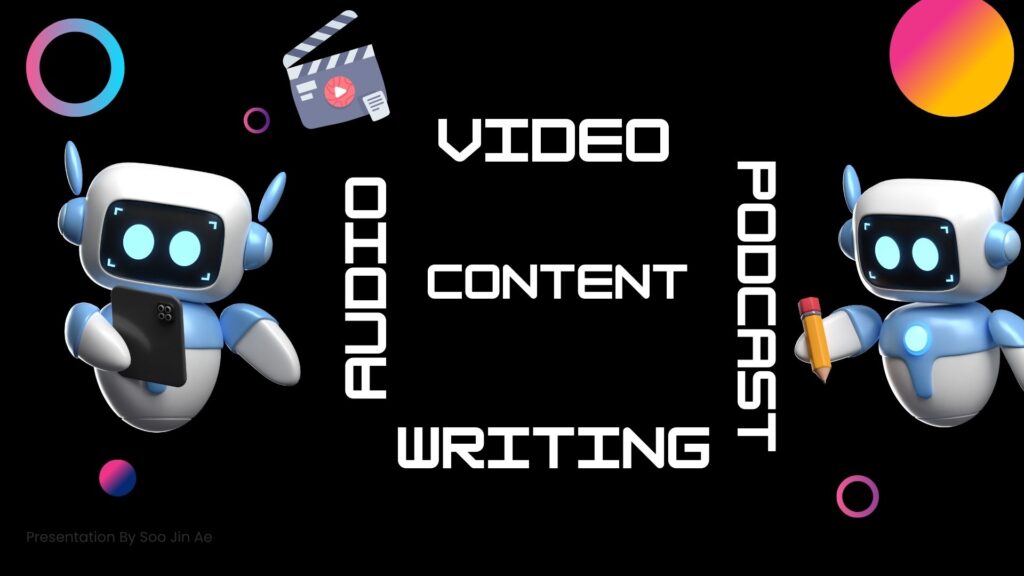Content marketing is a strategy in which you create attractive and valuable pieces such as articles, photos & videos etc. Heart to People It not only increases the knowledge of people but also solves a lot of problems too. Content is not just a marketing asset, it includes your blog posts, social media updates, videos or infographics as well as slideshows. A well-rounded content strategy includes clearly defining the kind of content published, having specific objectives and utilizing various forms of contents to reach & engage with your audience.
What is Content?
Everything that we share with others is the content. Content is created to inform, help or entertain people or drive them to action.
Importance of Content
Content includes the things we pass on to others or one another. The value of Content is everything, from informing or teaching your audience to entertaining them and finally taking some identity character, apart from all this has a clear influence on those who earn money! It is the medium to pass on information, have fun, and share your brand.
What is Content Marketing?
A marketing strategy that focuses on presenting informative, relevant, and consistent content to attract audiences is called content marketing. It creates good relations with them and enhances their brand knowledge. Well, informative content might lead the viewers to become your customers.
Why is Content Marketing Important?
Creates Trust: The starting point of every content marketing is to provide information about the brand, that informs your audience and publishes it so that audiences which want to know more are here.
Search Engines: Must good and attractive before upload any content. Good quality beautiful content can get better free traffic and good rankings on google.
Uploading the Content: It should be attractive and quality full for others. Great content – is what people love to learn about.
Content Vs Content Marketing
Content can be the stories, details shared by us to others. Content Marketing is a more for long term strategy of using Valuable, Relevant and Consistent content to attract an audience that helps drive conversions involving Publishing. Content, for example serves the sole purpose of informing, aiding people or entertaining and inspiring. Meanwhile, content marketing is a process of creating and sharing highly valuable, relevant content to attract an audience which will ultimately drive the actions you desire like brand awareness or SEO. To some, content marketing is the practice of creating informative, relevant and consistent content to gain profit from an audience; in other words, practicing inbound lead generation. So, content and content marketing go hand-in-hand. That channel turns around beautiful content, which right?
Purpose of Content Marketing
Content marketing will increase the knowledge of customers and their confidence in trust.
Increasing Brand Awareness: Enhancing the visibility of brand and reaching to target audience helps more people get familiar to your corporate. This helps in creating awareness of the brand name, logo, and products/services among customers. This is what allows a brand to compete and live – but only if it tends its own garden carefully.
Trust: If we keep delivering quality content that is interesting and amazing, this will cause more trust towards the brand. Improving the relationship between brand & customers. Your relation with customers becomes special when you promise quality in each product, especially because they would want to come back as a result.
Customer Retention: Providing correct service and quality products to old customers leads the business to keep them. Making more from who you have as opposed to hunting new customers down.
Improve SEO: It entails adding the right keywords to the content, helps with getting a better rank on Search Engines and attracts more traffic.

Types of Content Marketing
Blog Posts:
An article or piece of writing published on a website is called blog post. A blog can be about any topic, such as expressing opinions, offering advice, sharing personal experiences, or providing entertainment. Each blog post typically includes a title, main content, images or videos, and a section for readers to leave comments.
Blog posts can be on any topic imaginable. Here are a couple of examples: we can say: a blog post can be about any topic, like someone posting a blog post about travel. In that case, they would first choose a beautiful title, then explain a day-based plan. They will illustrate the environment, culture, and public perception. Similarly, imagine someone posting a blog post related to cooking. They too will give completeness to their blog post using a beautiful title.
Social Media Upload:
Any content shared on Facebook, Instagram, Twitter, LinkedIn, Quora, and other social media platforms is called a social media upload. This content can be a combination of links, images, documentaries, etc. The main purpose of a social media upload is to establish communication with others. Through social media uploads, one can engage with a specific audience.
For example, a Facebook post: a restaurant can share a post inviting people to its grand opening. Similarly, an individual can post a picture of their meal on Instagram with a caption and hashtags. Likewise, various articles on different topics are posted on Twitter and LinkedIn. Nowadays, on Quora, content is posted by asking questions on any subject. In short, social media uploads are a powerful way to build a community around a brand or interest.
Videos:
Uploading various informational pictures and videos increases brand awareness and connects with customers. Engaging content can be created using visuals and sound.
We can say as example that a mobile company creating a tutorial video on how to use their product. So that the consumer can relate with their product.
Infographics:
Infographics are a great way to visualize information and data. They are used on social media, websites, and presentations to make complex subjects easy to understand.
For example, imagine a bank describing its investment opportunities through an infographic. In that case, they would first create a chart outlining their advantages and also highlight the differences compared to other banks’ offerings. This way, if customers wish, they can choose to invest in their bank.
E-books and White Papers:
Provide detailed and in-depth information on specific topics.
An IT firm creating an eBook about their strategies. So that they can explain their consumers in-depth information on their topic.
Podcasts:
Content marketing can also be done through podcasts. Audio content discusses various topics and gives clear ideas to customers. There are different types of podcasts, as like educational podcast, crime podcasts, interview podcasts, news podcasts and many more.
Podcasts offer a convenient way to learn, stay informed, and be entertained.
Webinars:
Live or recorded online seminars on specific topics.
Example of that, a software company hosting a webinar showcasing the features of their latest product.
Email Newsletters:
Regular email updates and important information for subscribers. It can be different type for different audience.
There is an example of newsletters, An OTT platform sending special discount news.
Interactive Content: Encourages users to interact with the information rather than just receive it.
For an example, charts, graphs, timelines, 360-degree videos, and live streaming actively engage users.
Slideshows and Presentations: Slideshows and presentations are specific ways to present content sequentially, typically in the form of images or photographs accompanied by commentary.
For example, a travel enthusiast captures multiple images using their preferred camera during a visit to a particular location. Later, they compile these into an attractive presentation with engaging commentary, presenting it to an audience as a slideshow.
Both slideshows and presentations serve as effective tools to convey complex information and aid in retention.
How to Start Your Content Marketing Strategy
Understand the Audience: The primary purpose of content marketing is to win over the hearts of people. Well, it is important to know which content they like and what they don’t.
Clear Goals: All goals should be specific, which is your content marketing goal.
Content Plan: A list of topics to publish articles and when would you want them to be published.
Create High-Quality Content: Content must be of high quality and valuable. Creating valuable, relevant, and engaging content attracts the audience.
Content Promotion – Social media, email marketing, SEO and Advertising.
Calculate and Interpret Results- Tracking how well you are doing with the content.
Optimize: Fine-tune performance of content by reviewing frequently and making it better.
Conclusion
One way is content marketing, one of the most powerful strategies to target an audience by providing them with relevant and useful content. A content marketing strategy is knowing your audience, setting goals, planning what to create, creating well-written material and promoting it accordingly as well as measuring to understand how effective the efforts are. By doing this, it is easier to establish a profitable business that sustains success over the long-term.
You may also readhttp://exploringdigitalmarketing.com/youtube-marketing-essentials-for-beginners/







